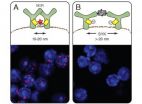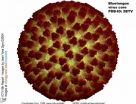(Press-News.org) FALLS CHURCH, Va. (June 25, 2014) — Boaters and marina workers should exercise caution this summer before taking to the seas. A study published online in the Journal of Occupational and Environmental Hygiene (JOEH) outlines hazards posed by carbon monoxide levels on houseboats that use gasoline-powered generators without emission controls, along with controls that are available to reduce exposure to carbon monoxide from the generators.
The study, conducted by researchers at the National Institute for Occupational Safety and Health (NIOSH), found that uncontrolled generators routinely emit carbon monoxide concentrations well above NIOSH's immediately dangerous to life or health (IDLH) value of 1200 parts per million. The analyses measured carbon monoxide emissions using various sampling techniques that included exhaust emission analyzers, detector tubes, evacuated containers (grab air samples analyzed by a gas chromatograph), and direct-reading carbon monoxide monitors.
"Houseboats that exhaust uncontrolled generator combustion gases beneath or near the rear deck indicated that extremely hazardous carbon monoxide concentrations can accumulate in that area," said Captain Ronald M. Hall, MS, CIH, CSP, the deputy branch chief in the Engineering and Physical Hazards Branch in the NIOSH Division of Applied Research and Technology in Cincinnati, Ohio. "These hazardous conditions were exacerbated when the drive engines were operating, placing employees who worked on or around the boats, as well as the boat operators, at risk."
The study began in 2000 when NIOSH received a request from the U.S. Department of the Interior (DOI) and the National Park Service to conduct a health hazard evaluation after carbon monoxide-related poisonings were identified on and around houseboats. The DOI asked NIOSH researchers to evaluate the exposure to employees who worked on or around houseboats while the generators operated, as well as to the public who operated the boats.
Following the investigations, NIOSH engineers worked with major houseboat and generator manufacturers to develop novel engineering controls to reduce carbon monoxide exposure and poisonings. Between 2004 and 2005, the two largest manufacturers of marine generators introduced low carbon monoxide emission models, which resulted in reductions of up to 99 percent in carbon monoxide concentrations in occupied areas on and around the boats.
In addition, NIOSH worked with the U.S. Environmental Protection Agency to put regulations in place that affect marine engines. These new regulations, which apply to carbon monoxide emissions from generators, stern-drive and inboard engines, and personal watercraft and outboard engines, are expected to result in significant reductions in carbon monoxide emissions and provide a much safer environment for both workers and boat users.
"Controlling exposures to occupational hazards is the fundamental method to protect workers. Recommendations from this effort have enabled the marine industry to widely embrace innovative solutions to mitigate this hazard," said Hall.
INFORMATION:
Read the full study in the Journal of Occupational and Environmental Hygiene and learn more about the health effects associated with carbon monoxide exposure.
ATTRIBUTION TO THE JOURNAL OF OCCUPATIONAL AND ENVIRONMENTAL HYGIENE IS REQUESTED IN ALL NEWS COVERAGE.
JOEH is published jointly by the American Industrial Hygiene Association® (AIHA) and the American Conference of Governmental Industrial Hygienists® (ACGIH). JOEH enhances the knowledge and practice of occupational and environmental hygiene and safety. It provides a written medium for the communication of ideas, methods, processes, and research in the areas of occupational, industrial, and environmental hygiene; exposure assessment; engineering controls; occupational and environmental epidemiology, medicine, and toxicology; ergonomics; and other related disciplines.
Study highlights carbon monoxide hazards on houseboats
NIOSH study measures hazardous concentrations of carbon monoxide on houseboats that use gasoline-powered generators
2014-06-25
ELSE PRESS RELEASES FROM THIS DATE:
New treatment option in development for individuals with food allergy
2014-06-25
New Rochelle, NY, June 25, 2014—For some children an allergic reaction to common foods such as milk, eggs, or peanuts can cause an anaphylactic reaction. At present no effective treatment for food allergy exists, and strict dietary avoidance of known food triggers is the only preventive option available. Ongoing trials are exploring options for oral immunotherapy (OIT) for desensitization in the treatment of Immunoglobulin E (IgE)-mediated food allergy, as described in a Review article in Pediatric Allergy, Immunology, and Pulmonology, a peer-reviewed journal from Mary ...
Deploying midwives in poorest nations could avert millions of maternal and newborn deaths
2014-06-25
A modest increase in the number of skilled midwives in the world's poorest nations could save the lives of a substantial number of women and their babies, according to new analyses by researchers from the Johns Hopkins Bloomberg School of Public Health.
Maternal mortality is a leading cause of death for women in many developing countries and public health efforts to avert it have only made headway in a few countries. Elsewhere, progress has either never started or has stalled in recent years. Poor nations also have troubling rates of infant and fetal deaths. Midwives ...
Mathematical models explain how a wrinkle becomes a crease
2014-06-25
PROVIDENCE, R.I. [Brown University] — Wrinkles, creases and folds are everywhere in nature, from the surface of human skin to the buckled crust of the Earth. They can also be useful structures for engineers. Wrinkles in thin films, for example, can help make durable circuit boards for flexible electronics.
A new mathematical model developed by researchers from Brown University could help engineers control the formation of wrinkle, crease, and fold structures in a wide variety of materials. It may also help scientists understand how these structures form in nature. The ...
Nanoscale ruler reveals organization of the cell membrane
2014-06-25
This news release is available in German.
After a ten-year effort, Prof. Dr. Michael Reth from the Institute of Biology III of the University of Freiburg and the Max Planck Institute of Immunobiology and Epigenetics has developed a method to investigate the cell surface's organization on a nanometer scale. This allows him to monitor how the antigen receptor, which B cells of the immune system use to recognize foreign substances, changes after activation. This study shows that the receptor components dissociate from each other– rather than assemble, as previously ...
New study quantifies the effects of climate change in Europe
2014-06-25
If no further action is taken and global temperature increases by 3.5°C, climate damages in the EU could amount to at least €190 billion, a net welfare loss of 1.8% of its current GDP. Several weather-related extremes could roughly double their average frequency. As a consequence, heat-related deaths could reach about 200 000, the cost of river flood damages could exceed €10 billion and 8000 km2 of forest could burn in southern Europe. The number of people affected by droughts could increase by a factor of seven and coastal damage, due to sea-level rise, could more than ...
Using math to analyze movement of cells, organisms, and disease
2014-06-25
Traveling waves model tumor invasion
Cell migration, which is involved in wound healing, cancer and tumor growth, and embryonic growth and development, has been a topic of interest to mathematicians and biologists for decades.
In a paper published recently in the SIAM Journal on Applied Dynamical Systems, authors Kristen Harley, Peter van Heijster, Robert Marangell, Graeme Pettet, and Martin Wechselberger study a model describing cell invasion through directional outgrowth or movement in the context of malignant tumors, in particular, melanoma or skin cancer. Tumor ...
Freedom of choice: When rejection and discrimination hinder minority entrepreneurs
2014-06-25
When it comes to The American Dream, freedom of choice is a central value for entrepreneurs. According to a new study in the Journal of Consumer Research, when a person's choices are limited due to rejection and discrimination, they are more likely to fail at business and in their personal lives.
"Not only does restricting a person's choices threaten the success of a new business, it also has swift and damaging effects on the individual's self-esteem and their personal sense of control and power in the world," write authors Sterling A. Bone (Utah State University), Glenn ...
Money in the bank: Why does feeling powerful help people save more?
2014-06-25
In a materialistic culture, saving money is a challenge many of us face long before our retirement years. While many people think education, upbringing, and self-control are major contributors to a person's savings habits, a new study in the Journal of Consumer Research reveals that people save more when they feel powerful.
"We were interested in knowing whether the decision to save or not save money was affected by how someone was feeling during the time they were making a savings decision," write authors Emily N. Garbinsky (Stanford University), Anne-Kathrin Klesse ...
Army leads collaborative effort to establish standards for sequencing viral genomes
2014-06-25
Scientists at the U.S. Army Medical Research Institute of Infectious Diseases (USAMRIID) have proposed a set of standards aimed at developing a common "language" among investigators working to sequence viral genomes and characterize viral stocks.
According to USAMRIID senior author Gustavo Palacios, Ph.D., the proposed system, published last week as an editorial in the journal mBio, is the result of a collaborative effort involving scientists from many of the world's leading institutions. Contributors include the Broad Institute, the J. Craig Venter Institute, Los Alamos ...
Achieving Your Goals: Does removing yourself from the big picture help?
2014-06-25
Consider the case of the adult student attending night school to earn a degree that will result in a better job with higher pay. From sacrificing time with friends and family to missing a relaxing evening watching TV, this type of long-term gain often comes with short-term pain. According to a new study in the Journal of Consumer Research, people are more likely to achieve their goals and avoid temptations when they are able to remove themselves from the big picture.
"Past research on personal achievement has focused on whether someone sets nearsighted or farsighted ...
LAST 30 PRESS RELEASES:
Air pollution exposure and birth weight
Obstructive sleep apnea risk and mental health conditions among older adults
How talking slows eye movements behind the wheel
The Ceramic Society of Japan’s Oxoate Ceramics Research Association launches new international book project
Heart-brain connection: international study reveals the role of the vagus nerve in keeping the heart young
Researchers identify Rb1 as a predictive biomarker for a new therapeutic strategy in some breast cancers
Survey reveals ethical gaps slowing AI adoption in pediatric surgery
Stimulant ADHD medications work differently than thought
AI overestimates how smart people are, according to HSE economists
HSE researchers create genome-wide map of quadruplexes
Scientists boost cell "powerhouses" to burn more calories
Automatic label checking: The missing step in making reliable medical AI
Low daily alcohol intake linked to 50% heightened mouth cancer risk in India
American Meteorological Society announces Rick Spinrad as 2026 President-Elect
Biomass-based carbon capture spotlighted in newly released global climate webinar recording
Illuminating invisible nano pollutants: advanced bioimaging tracks the full journey of emerging nanoscale contaminants in living systems
How does age affect recovery from spinal cord injury?
Novel AI tool offers prognosis for patients with head and neck cancer
Fathers’ microplastic exposure tied to their children’s metabolic problems
Research validates laboratory model for studying high-grade serous ovarian cancer
SIR 2026 delivers transformative breakthroughs in minimally invasive medicine to improve patient care
Stem Cell Reports most downloaded papers of 2025 highlight the breadth and impact of stem cell research
Oxford-led study estimates NHS spends around 3% of its primary and secondary care budget on the health impacts of heat and cold in England
A researcher’s long quest leads to a smart composite breakthrough
Urban wild bees act as “microbial sensors” of city health.
New study finds where you live affects recovery after a hip fracture
Forecasting the impact of fully automated vehicle adoption on US road traffic injuries
Alcohol-related hospitalizations from 2016 to 2022
Semaglutide and hospitalizations in patients with obesity and established cardiovascular disease
Researchers ‘listen in’ to embryo-mother interactions during implantation using a culture system replicating the womb lining
[Press-News.org] Study highlights carbon monoxide hazards on houseboatsNIOSH study measures hazardous concentrations of carbon monoxide on houseboats that use gasoline-powered generators



